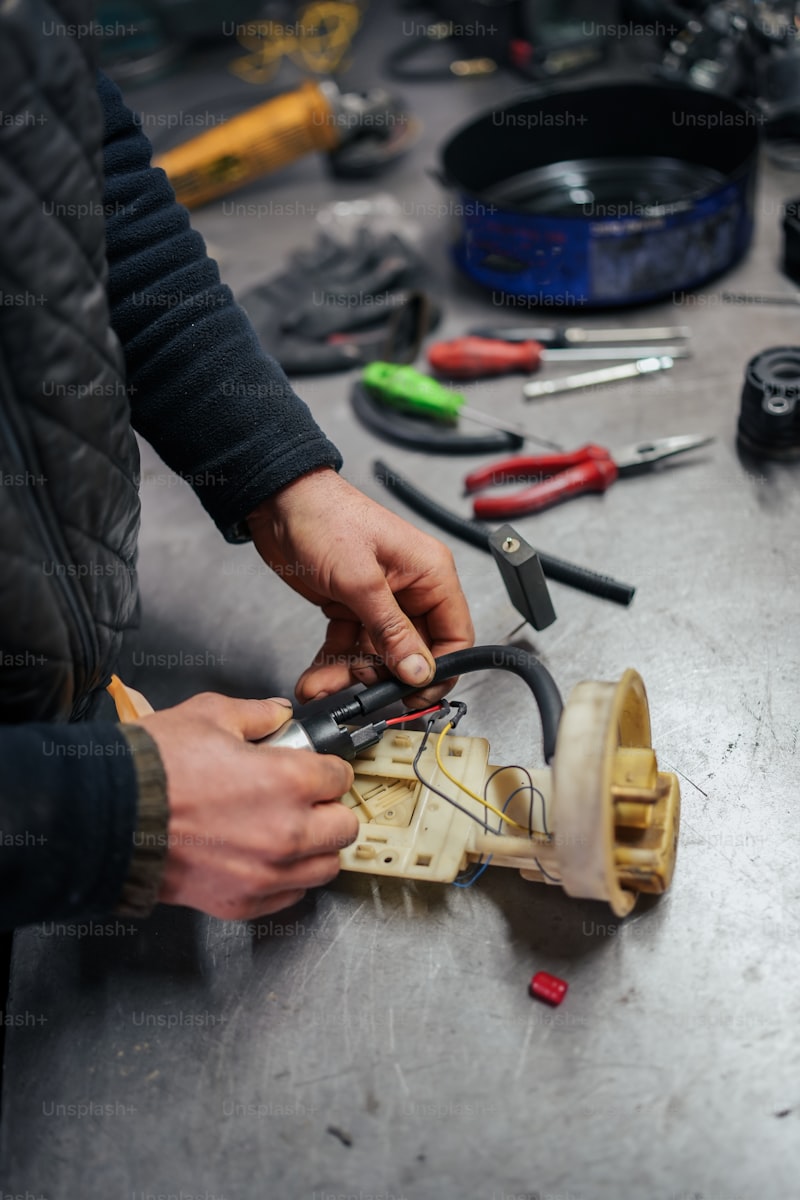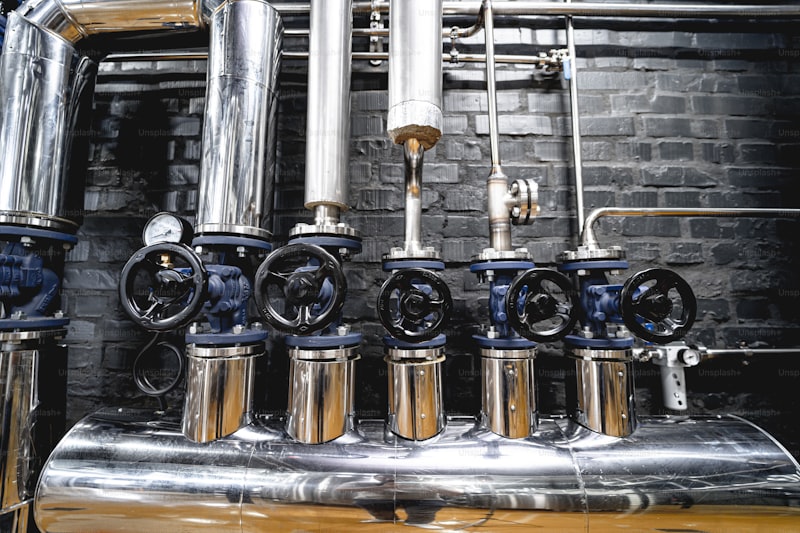Is your car’s AC compressor acting up on those scorching summer days, leaving you sweating behind the wheel? Dealing with a malfunctioning AC compressor can be a real headache, but fear not – there are ways to tackle this issue and restore your cool comfort.
Firstly, it’s crucial to diagnose the problem accurately. If your AC system is blowing warm air or making strange noises, chances are the compressor is at fault. Start by checking the compressor clutch to see if it engages when the AC is turned on. A faulty clutch might be the root cause of your AC woes.
Once diagnosed, consider whether you’re up for a DIY fix or if professional help is needed. DIY enthusiasts can attempt to replace the compressor clutch or bearings themselves with a few basic tools and a new part. However, be warned – working on AC systems requires careful handling of refrigerant, which is regulated and should not be released into the atmosphere.
For more complex issues such as internal compressor damage or leaks, it’s best to seek help from a certified mechanic. They have the expertise and equipment to safely handle refrigerant and perform intricate repairs without compromising the integrity of your AC system.
Remember, maintaining your car’s AC system with regular inspections and timely repairs can prevent costly breakdowns in the future. Just like giving your car regular oil changes extends its lifespan, keeping an eye on your AC compressor ensures you stay cool on the road.
Don’t let a malfunctioning AC compressor put a damper on your driving experience. Whether you tackle it yourself or leave it to the pros, addressing AC issues promptly will keep you cruising comfortably, no matter how hot it gets outside.
Mastering the Mechanics: Step-by-Step Guide to Repairing Your Car’s AC Compressor
Is your car’s AC not cooling as it should? Understanding how to repair your car’s AC compressor can save you time and money. The AC compressor plays a crucial role in cooling your vehicle during hot summer days. Here’s a detailed guide to help you master the mechanics of repairing it yourself.
First, diagnose the issue. Is the AC blowing warm air? Is there unusual noise coming from the compressor? Identifying these symptoms will guide you towards understanding what might be wrong with the AC compressor.
Before you start, gather the necessary tools: wrench set, screwdrivers, refrigerant gauges, safety glasses, and gloves. These tools will help you safely disassemble and reassemble the components.
Safety first! Start by disconnecting the car battery. This prevents any electrical mishaps while working on the compressor.
Using refrigerant gauges, safely remove the refrigerant from the AC system. This step is crucial for accessing the compressor without damaging other components.
Carefully remove the old compressor by loosening bolts and disconnecting electrical connections. Keep track of each component to ensure correct reinstallation.

Install the new compressor in the reverse order of removal. Secure bolts tightly and reconnect all electrical connections.
After installing the new compressor, recharge the AC system with the appropriate amount of refrigerant. Follow manufacturer guidelines for the correct type and quantity of refrigerant.
Once everything is reassembled, reconnect the car battery and start the engine. Turn on the AC to check if it’s blowing cold air. Listen for any unusual noises that could indicate further issues.
Finally, check for leaks using a UV light and refrigerant dye. This ensures that the system is sealed properly and operating efficiently.
Repairing your car’s AC compressor can be a rewarding experience, but it requires attention to detail and safety precautions. By following this step-by-step guide, you can master the mechanics and enjoy a cool, comfortable ride even on the hottest days.
Cool Breeze Solutions: DIY Tips for Troubleshooting and Fixing AC Compressor Issues
First things first, make sure your AC unit is getting power. Sometimes, a tripped breaker or a blown fuse can be the culprit behind a malfunctioning compressor. Head over to your electrical panel and inspect for any tripped breakers. If you find one, reset it and see if that resolves the issue. If fuses are blown, replace them carefully following manufacturer guidelines.
Imagine trying to breathe through a clogged straw — not easy, right? Well, that’s what dirty condenser coils do to your AC compressor. Over time, these coils collect dirt, debris, and even grass clippings if your outdoor unit is placed near the lawn. Grab your garden hose and gently spray the coils to clean off the gunk. For stubborn dirt, a coil cleaner can do wonders. Just remember to power off the unit before you start cleaning.
Refrigerant is the lifeblood of your AC system. Low levels can cause your compressor to struggle. Check the refrigerant lines for any leaks and ensure that the levels are within the manufacturer’s recommended range. If you suspect a leak, it’s best to call in a professional HVAC technician to fix it safely.
The capacitor is like a boost of energy for your compressor. If it’s faulty or weak, your compressor might refuse to start or could shut down unexpectedly. You can visually inspect the capacitor for any signs of bulging or leaking. If you have a multimeter, you can also test its capacitance to see if it’s within the acceptable range.
A clogged air filter restricts airflow, making your AC compressor work harder than it needs to. This not only reduces efficiency but can also lead to overheating. Check your air filters regularly and replace them if they’re dirty. It’s a simple task that can make a world of difference in keeping your compressor happy.

By following these DIY tips, you can troubleshoot and fix common AC compressor issues without breaking a sweat. Remember, though, safety first! If you’re unsure or uncomfortable with any DIY steps, it’s always best to call in a professional HVAC technician to ensure your system stays cool and efficient all summer long.
Expert Advice: Essential Tools You Need to Fix Your Car’s AC Compressor
First off, understanding the basics of your car’s AC system is key. The AC compressor is the heart of this system, responsible for compressing and circulating refrigerant. If it malfunctions, your AC won’t blow cold air, turning your ride into a sauna on wheels.
One of the most essential tools for tackling AC compressor issues is a manifold gauge set. This tool allows you to measure the pressure of the refrigerant in the AC system. By connecting it to the high and low-pressure ports, you can diagnose whether your system is overcharged, undercharged, or if there’s another issue affecting performance.
Next up, a set of refrigerant leak detectors is vital. These tools help pinpoint leaks in your AC system, which can be elusive and tricky to find without the right equipment. Finding and fixing leaks promptly prevents further damage to your compressor and ensures efficient cooling.
For actually replacing or repairing the compressor itself, you’ll need a comprehensive set of hand tools including wrenches, sockets, and screwdrivers. Different vehicles may require different tools, so having a versatile toolkit is essential.
Lastly, a vacuum pump and an AC manifold gauge set are indispensable for evacuating and recharging the refrigerant system. A vacuum pump removes air and moisture from the system before refilling it with fresh refrigerant, ensuring optimal performance and longevity.
By equipping yourself with these essential tools and following expert advice, you can confidently tackle issues with your car’s AC compressor. Remember, proper maintenance and timely repairs can save you from sweltering heat and costly repairs down the road.
From Diagnosis to Repair: Simplifying the Process of Fixing Your AC Compressor
Diagnosing AC compressor issues starts with recognizing common signs: strange noises, like grinding or squealing, poor cooling performance, or even unusual odors emanating from the vents. These symptoms often indicate compressor problems, but a thorough inspection by a certified technician is crucial to pinpoint the exact issue.
Once diagnosed, the repair process kicks into gear. It’s akin to surgery for your home’s climate control system. The compressor, often referred to as the heart of your AC, may need repairs ranging from replacing faulty electrical components to fixing refrigerant leaks. Each step is critical to restoring your AC’s cooling power efficiently.
Understanding the process can ease your mind. Think of it as a skilled mechanic delicately restoring a vintage car—each part meticulously inspected, repaired, or replaced to ensure optimal performance. Your AC compressor, too, undergoes a similar meticulous process, ensuring every component works harmoniously once more.
Moreover, consider the relief when your AC finally hums back to life, cool air flooding your living space like a refreshing breeze on a hot day. The journey from diagnosis to repair may seem daunting, but with the right expertise and care, it becomes a seamless endeavor, ensuring your comfort is restored swiftly and effectively.
Navigating the intricacies of AC compressor repair is indeed complex, yet the rewards—reliable cooling and comfort—are worth the effort. So, next time your AC acts up, remember: diagnosis leads to precision repair, and before long, you’ll be enjoying the cool comfort of your home once more.
Beat the Heat: Easy Fixes for Common AC Compressor Problems
One of the most common issues you might encounter with your AC compressor is a lack of cooling. You turn it on, but instead of that refreshing blast of cold air, you get… nothing. This could be due to a refrigerant leak, which prevents your system from properly cooling the air. Think of it like trying to fill up a leaky bucket — no matter how much water you pour in, it’s just going to keep dripping out.
Another pesky problem is when your compressor keeps turning on and off rapidly, a phenomenon known as short cycling. It’s like your AC is having a case of the hiccups! This can happen if your compressor is overheating, often due to a dirty condenser coil or a clogged air filter. Imagine trying to run a marathon with a stuffy nose — not fun, right?
And then there’s the issue of strange noises coming from your AC unit. If you hear clanking, banging, or grinding sounds, it’s time to investigate. These noises could indicate a loose part or even a failing compressor motor. It’s like your AC unit is trying to tell you it’s not feeling too hot — literally!
Lastly, don’t forget about the dreaded compressor won’t start at all problem. You crank up the thermostat, but your AC remains stubbornly silent. This might be caused by electrical issues, such as a faulty capacitor or a blown fuse. It’s like your AC is playing hide-and-seek, but you really need it to come out and play!
Frequently Asked Questions
What Steps Should I Follow to Recharge the Refrigerant in My Car’s AC System
Learn the steps to recharge your car’s AC system with refrigerant safely and effectively. Understand the equipment needed, locate service ports, attach the refrigerant canister, start the engine and AC, monitor pressure gauges, and stop when fully charged. Ensure compliance with safety guidelines throughout.
What Are Common Causes of AC Compressor Failure
Learn about the common causes of AC compressor failure with this concise FAQ. Discover key reasons such as refrigerant leaks, electrical issues, and wear over time. Understand how regular maintenance can prevent costly repairs and ensure efficient cooling performance.
How Do I Know If My Car’s AC Compressor Is Faulty
Learn how to identify a faulty AC compressor in your car with our concise FAQ guide. Discover common symptoms such as unusual noises, warm air from vents, or AC system failure. Find troubleshooting tips and when to seek professional repair.
What Tools and Parts Do I Need to Fix an AC Compressor
Learn about the essential tools and parts needed to fix an AC compressor efficiently. Discover the specific tools required for tasks like refrigerant recovery, compressor removal, and system reassembly. Ensure you have the necessary replacement parts such as seals, gaskets, and possibly a new compressor unit to complete the repair successfully.
Can I Replace the AC Compressor Myself, or Should I Hire a Professional
Learn whether replacing the AC compressor yourself is feasible or if hiring a professional is recommended. Get clear, concise guidance to make an informed decision.



